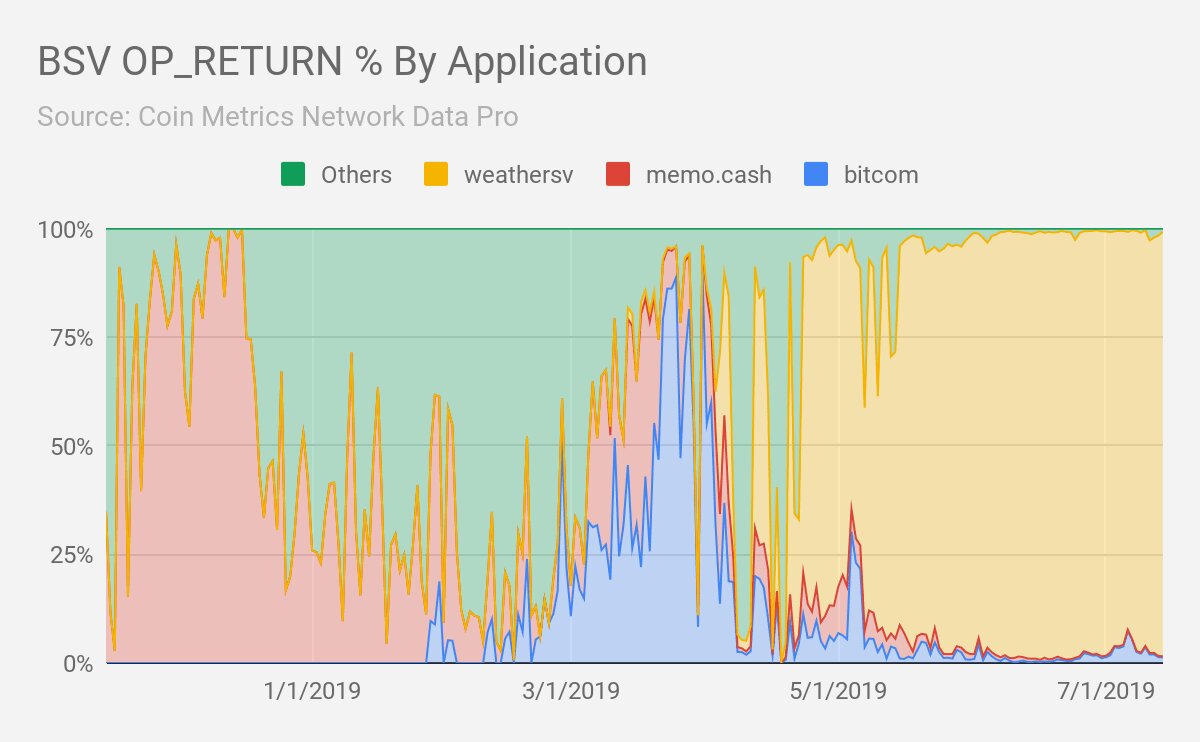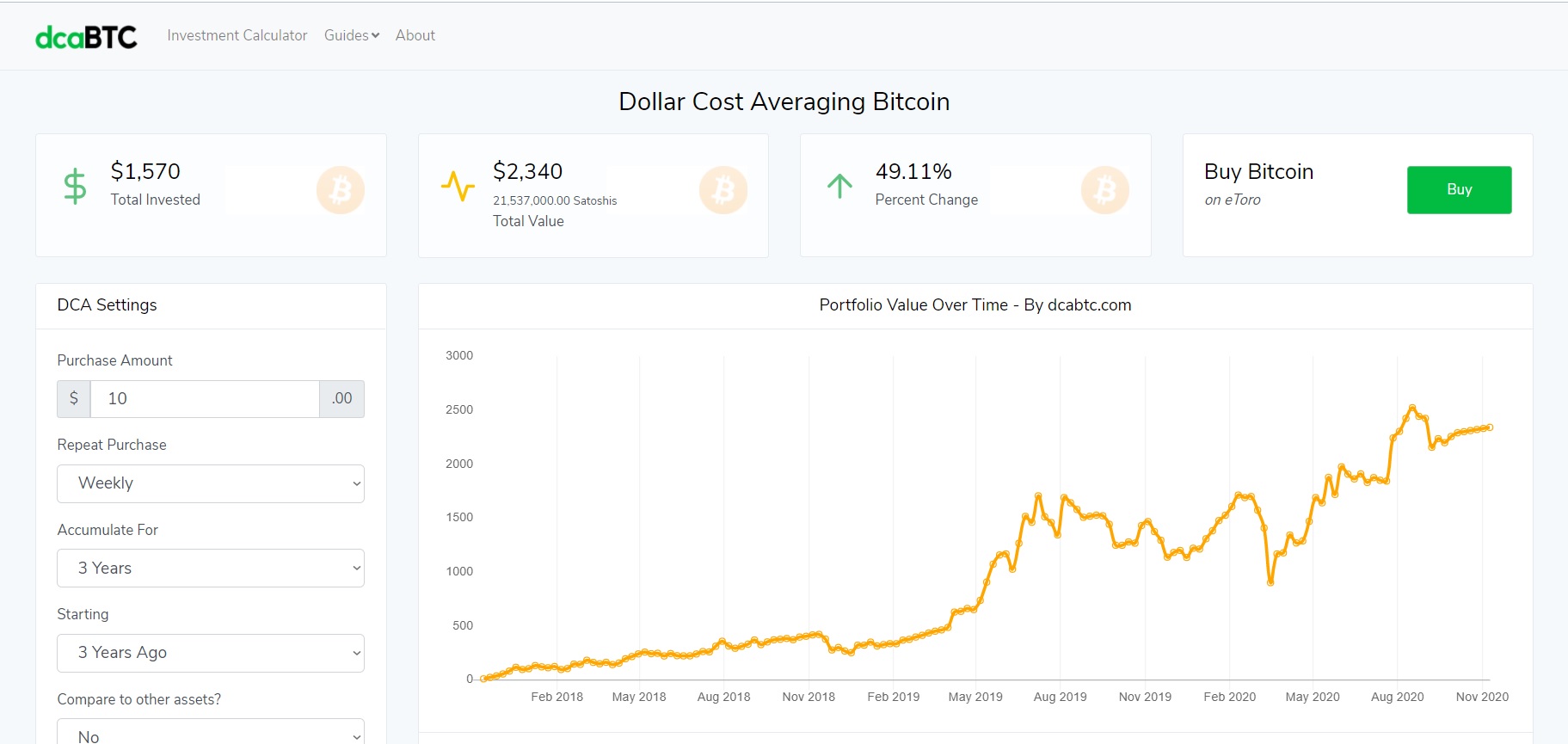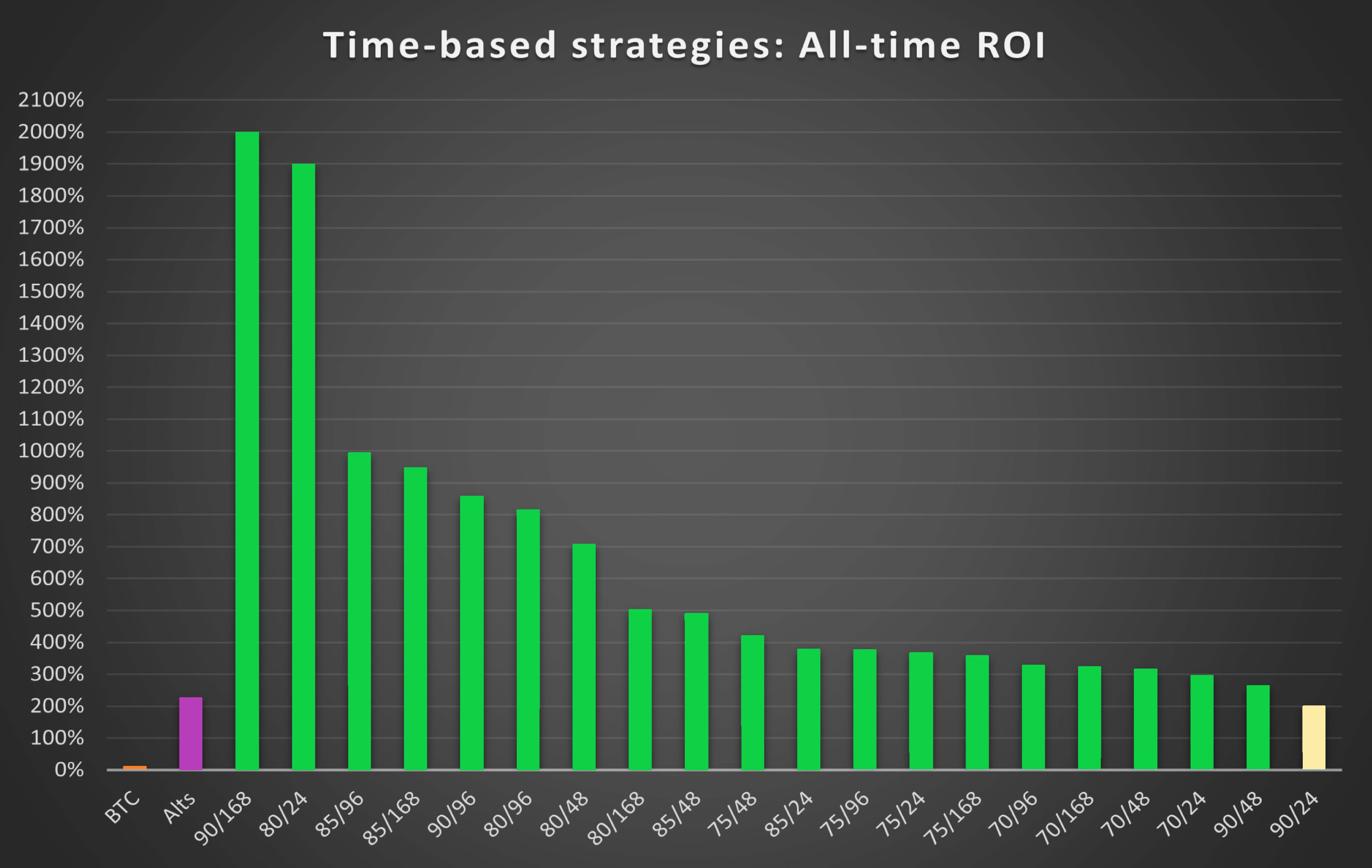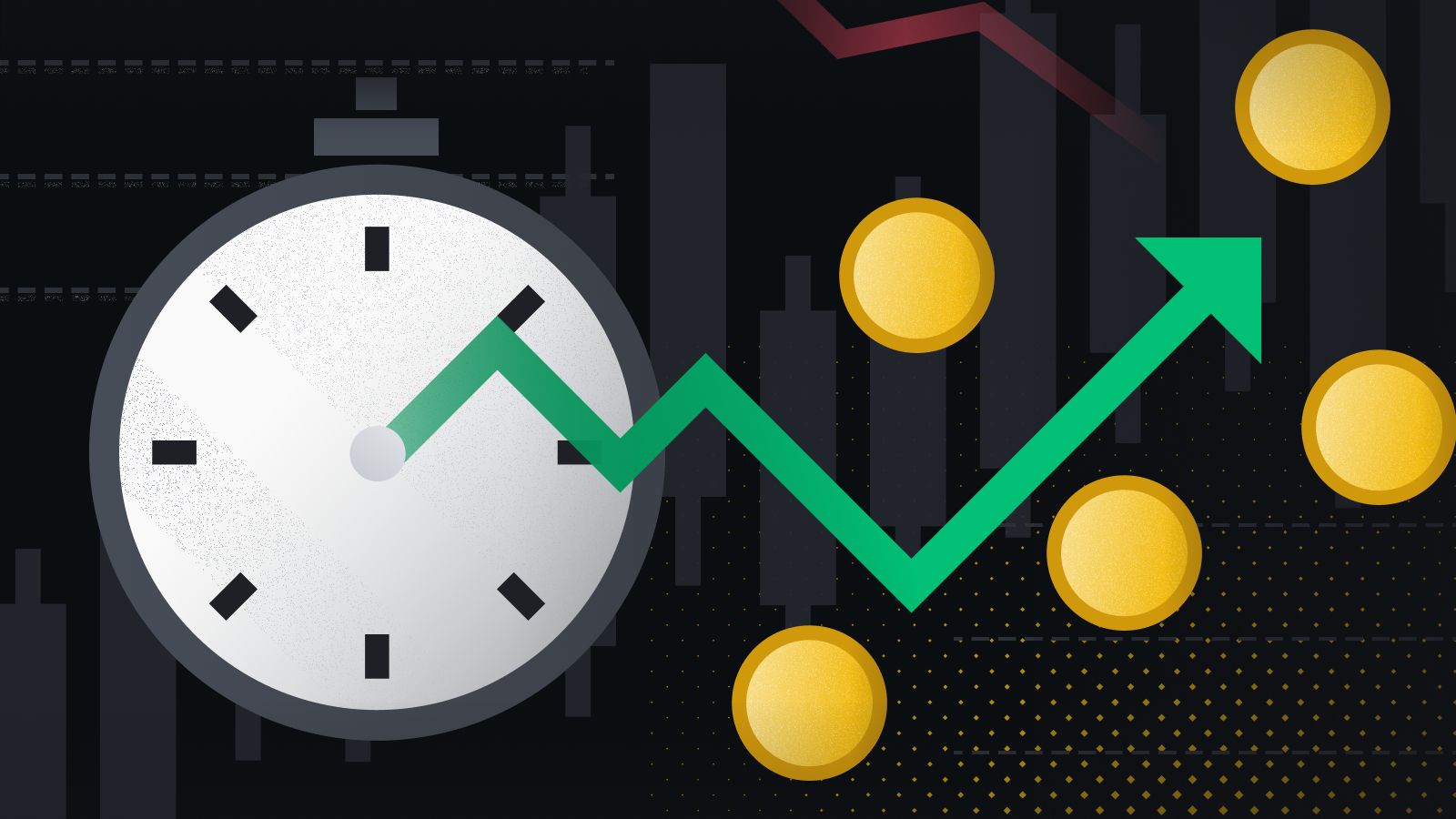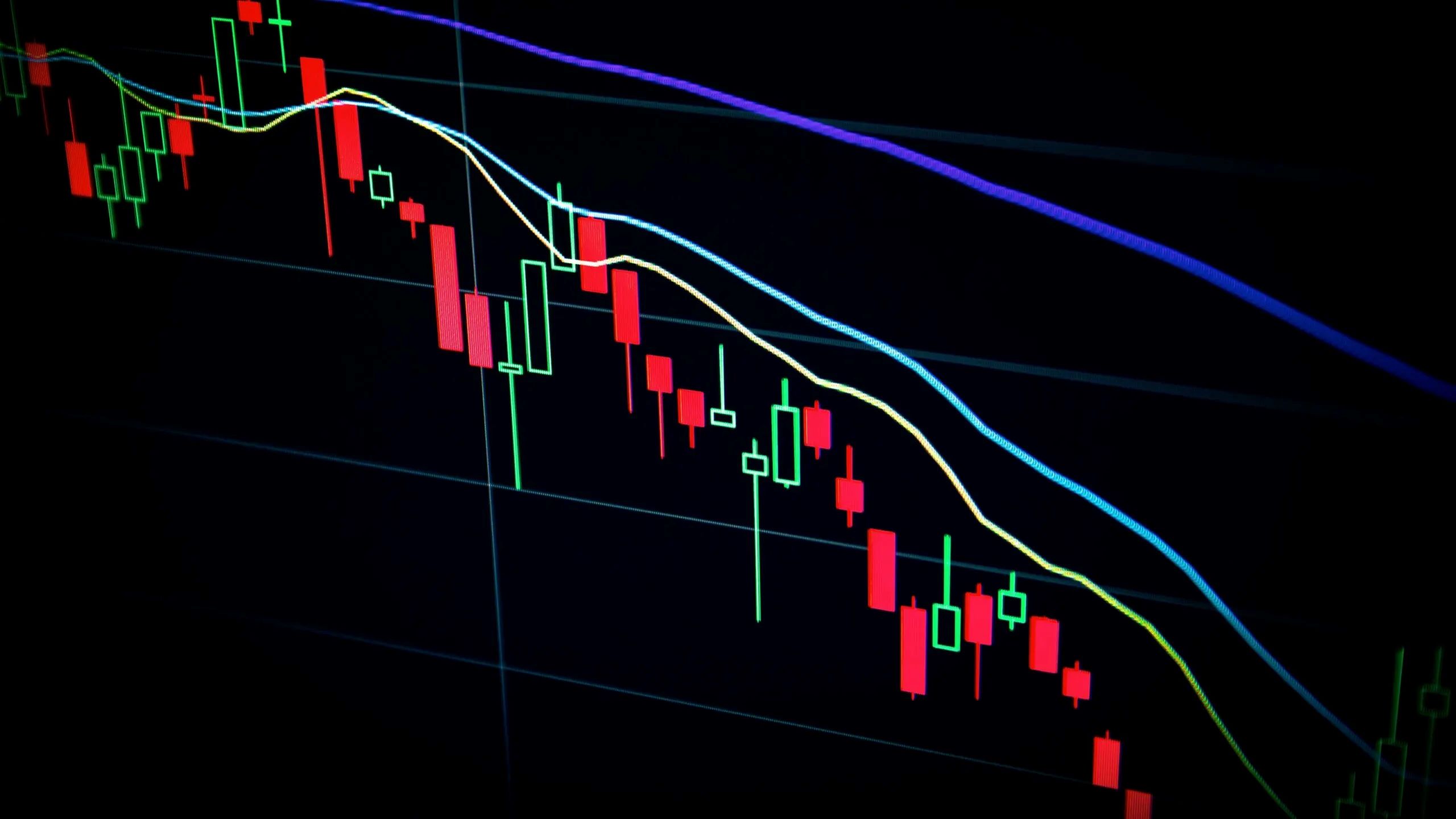Introduction
Cryptocurrency has become a global sensation, captivating the attention of investors, tech enthusiasts, and the general public alike. With its promise of decentralization, security, and potential for significant returns, it is no wonder that cryptocurrency has gained immense popularity in recent years. However, one aspect of the crypto market that has always remained a topic of discussion is its volatility.
Crypto market volatility refers to the rapid and significant price fluctuations experienced by cryptocurrencies such as Bitcoin, Ethereum, and others. These price swings are often unpredictable, ranging from small daily fluctuations to massive price crashes or surges within hours or even minutes. Understanding the reasons behind this volatility is crucial for anyone involved in the cryptocurrency space, as it significantly impacts investment decisions, trading strategies, and overall market sentiment.
While traditional financial markets also experience volatility, the cryptocurrency market takes it to a whole new level. Crypto markets are notorious for their extreme price movements, with seemingly unrelated news or events causing prices to skyrocket or plummet. This level of volatility presents unique challenges and opportunities, making it important to delve into the factors that contribute to this phenomenon.
This article aims to explore why cryptocurrencies are so volatile, analyzing the various factors that contribute to this volatility. By understanding these dynamics, investors, traders, and enthusiasts can gain valuable insights into the crypto market and make informed decisions.
What is cryptocurrency?
Cryptocurrency is a digital or virtual form of currency that uses cryptography to secure transactions, control the creation of additional units, and verify the transfer of assets. Unlike traditional fiat currencies, which are issued and regulated by central banks, cryptocurrencies operate on decentralized networks known as blockchains.
The most well-known and widely used cryptocurrency is Bitcoin, which was created in 2009 by an anonymous person or group of people known as Satoshi Nakamoto. Since then, thousands of other cryptocurrencies, commonly referred to as altcoins, have been developed, each with its own unique features and purposes.
Cryptocurrencies are based on a technology called blockchain, which is a public ledger that records all transactions across the network. The blockchain ensures transparency and security by using advanced cryptographic techniques to validate and encrypt transactions. This decentralized nature of cryptocurrencies eliminates the need for intermediaries such as banks, resulting in faster and cheaper transactions.
One key feature of cryptocurrencies is their limited supply. Unlike fiat currencies that can be printed at will, many cryptocurrencies have a finite supply, with a predetermined number of coins that can ever exist. This scarcity creates a sense of value and can potentially drive up the price as demand increases.
Another defining characteristic of cryptocurrencies is their pseudonymous nature. While transactions on the blockchain are transparent, the identities of the users involved remain private. Users are identified by unique addresses rather than their personal information, providing a certain level of privacy and security.
Overall, cryptocurrencies represent a new form of digital money that offers decentralized control, security, and transparency. They have the potential to revolutionize traditional financial systems by eliminating intermediaries, reducing fees, and providing greater financial inclusion to individuals worldwide.
Understanding volatility
Volatility is a fundamental concept in the financial world and refers to the degree of variation in the price of an asset over a specific period. In the context of cryptocurrency, volatility measures the extent of price fluctuations experienced by digital currencies.
Cryptocurrency volatility can be attributed to several factors, including market sentiment, supply and demand dynamics, macroeconomic factors, news events, and technological developments. The highly speculative nature of the crypto market also contributes significantly to its volatility.
Volatility is often measured using statistical indicators such as standard deviation or beta. A higher volatility indicates larger price swings and greater uncertainty, while lower volatility suggests more stability in prices. It is important to note that volatility can present both opportunities and risks for traders and investors.
One way to understand volatility is through the concept of price elasticity. Cryptocurrencies, especially those with smaller market capitalizations, tend to be more volatile as they are more sensitive to market forces and have a lower liquidity compared to their larger counterparts.
The impact of volatility can vary depending on one’s perspective. For traders, volatility can be advantageous as it provides opportunities to profit from short-term price movements. However, it also carries higher risks, as sudden price swings can lead to significant losses if not managed properly.
On the other hand, long-term investors may have a different view on volatility. Although the short-term volatility may be unsettling, they often view it as noise and focus on the potential long-term growth of an asset. They understand that volatility in the early stages of an emerging market is to be expected and can lead to significant returns if they believe in the underlying technology and have a long-term investment horizon.
Overall, understanding and managing volatility is essential for anyone involved in the cryptocurrency market. Whether it is traders looking for short-term gains or long-term investors holding for the future, being aware of the factors driving volatility and developing appropriate strategies can help navigate the ups and downs of the crypto market and capitalize on its potential.
Factors contributing to crypto volatility
The cryptocurrency market is known for its high level of volatility, with prices fluctuating rapidly and dramatically. Several factors contribute to this volatility, and understanding them is crucial for navigating the crypto landscape. Let’s explore some of the key factors:
- Lack of regulation: The absence of stringent regulations in the crypto market allows for greater freedom, but it also opens the door to manipulation and fraudulent activities. The lack of oversight contributes to price manipulation and market volatility.
- Speculation and hype: Cryptocurrencies often attract speculative traders seeking quick profits. News, social media trends, and investor sentiment can create hype around specific cryptocurrencies, causing prices to soar or crash without corresponding changes in underlying fundamentals.
- Market manipulation: The relatively small size of the crypto market makes it susceptible to manipulation by large players or “whales” with significant holdings. Through coordinated buying or selling, these market participants can influence prices, leading to sudden and drastic price swings.
- News and events: News events, such as regulatory announcements, partnerships, or security breaches, can have a significant impact on cryptocurrency prices. Positive news can spark a buying frenzy, while negative news can trigger panic selling, leading to increased volatility.
- Lack of liquidity: Many cryptocurrencies have lower trading volumes and liquidity compared to traditional financial markets. This lack of liquidity can exacerbate price movements as even small buy or sell orders can cause significant price swings.
- Technology and infrastructure limitations: The crypto market is still relatively young, and technological and infrastructure limitations can contribute to price volatility. Network congestion, scalability issues, and security concerns can adversely impact investor confidence and result in price fluctuations.
- Investor psychology: The psychology of market participants can also contribute to crypto volatility. Fear, greed, and herd mentality can amplify price movements as traders react to market sentiment rather than rational analysis, leading to increased volatility.
It’s important to note that these factors often interact and reinforce each other, creating a complex and dynamic environment. Traders and investors need to be aware of these factors and adapt their strategies accordingly to navigate the volatile crypto market successfully.
Lack of regulation
One of the major factors contributing to the volatility in the cryptocurrency market is the lack of regulation. Unlike traditional financial markets that are heavily regulated by government bodies, the crypto market operates in a relatively unregulated environment.
The absence of strict regulatory oversight creates an environment of uncertainty and vulnerability, making the crypto market more susceptible to price manipulation and fraudulent activities. Without clear rules and regulations, market participants have more freedom to engage in manipulative practices such as pump and dump schemes or insider trading.
Moreover, the lack of regulation also leads to a lack of standardization and uniformity across different jurisdictions. Each country has its own approach to cryptocurrency regulation, with some embracing it, others imposing strict regulations, and some even banning it altogether. This regulatory fragmentation adds to the complexity and uncertainty of the crypto market, contributing to higher volatility.
Regulation can play a crucial role in reducing volatility and improving market stability. It can help establish guidelines for market participants, promote transparency, and protect investors from fraudulent activities. By implementing regulatory frameworks, governments can instill confidence in the market, attracting more institutional investors and reducing instances of market manipulation.
However, finding the right balance between regulation and innovation is a challenge. Excessive regulations can stifle innovation and hinder the growth of the crypto market. Striking the right balance requires regulators to understand the unique characteristics of cryptocurrencies and blockchain technology while safeguarding against potential risks.
Efforts to regulate the cryptocurrency market are gradually increasing. Regulatory bodies in various countries are starting to develop frameworks to monitor and control the crypto market. These regulations aim to bring more transparency, investor protection, and stability to the crypto space.
As the crypto market matures and regulations become more established, we can expect a reduction in volatility. Clear guidelines and regulations will help weed out fraudulent players, increase market confidence, and attract more institutional investors, ultimately contributing to a more stable and less volatile cryptocurrency market.
Speculation and hype
Speculation and hype play a significant role in driving the volatility of the cryptocurrency market. The crypto space has gained a reputation for attracting speculative traders and investors who are looking to profit from short-term price movements rather than long-term value.
News, social media trends, and market sentiment can create a sense of excitement and anticipation around specific cryptocurrencies. This hype often leads to rapid surges in prices as more investors rush to buy in, hoping to capitalize on the uptrend. However, this enthusiasm can quickly turn into panic selling if the hype subsides or negative news emerges.
The speculative nature of the crypto market means that price movements can be detached from the underlying fundamentals of a cryptocurrency. This detachment can cause short-term price volatility that may not be justified by the actual value or utility of the digital asset.
Furthermore, the lack of traditional valuation metrics and the difficulty in assessing the true worth of cryptocurrencies make them more susceptible to speculation. Investors have to rely on market sentiment, technical analysis, and their own judgment to make investment decisions, further amplifying the role of speculation in driving price volatility.
Another factor contributing to speculation and hype is the presence of pump and dump schemes. These schemes involve a coordinated effort to artificially inflate the price of a cryptocurrency through mass buying, creating the illusion of high demand. Once the price reaches a certain level, the perpetrators sell their holdings, causing the price to crash and leaving other investors with significant losses.
While speculation and hype can lead to rapid price increases and potential profits, they also increase the risk of significant price corrections and losses. The crypto market is highly sensitive to market sentiment and can be influenced by even the smallest news or social media trends. Traders and investors should exercise caution and conduct thorough research before making investment decisions based on speculation and hype.
As the cryptocurrency market matures and becomes more widely adopted, we can expect a reduction in speculative behavior and a shift towards a more value-driven approach. Increased regulatory oversight, improved market transparency, and the establishment of clear use cases for cryptocurrencies will contribute to a more stable and less speculative market environment.
Market manipulation
Market manipulation is a significant factor contributing to the volatility seen in the cryptocurrency market. Due to its relatively small size and lower liquidity compared to traditional financial markets, the crypto market is more susceptible to manipulation by large players or “whales” with substantial holdings.
Market manipulation can take various forms, including pump and dump schemes, spoofing, wash trading, and front-running. These manipulative practices aim to create artificial price movements and deceive other market participants, often resulting in significant price fluctuations.
A common tactic used in market manipulation is the pump and dump scheme. This scheme involves artificially inflating the price of a specific cryptocurrency through coordinated buying, creating a false sense of high demand. Once the price reaches a certain level, the manipulators sell their holdings, causing the price to crash and leaving unsuspecting investors with losses.
Spoofing is another form of market manipulation where traders place large buy or sell orders with the intention of canceling them before they are executed. This tactic creates a false perception of market sentiment, potentially influencing other traders to enter or exit positions based on the apparent demand or supply.
Wash trading occurs when traders buy and sell assets to themselves or collude with other traders to create artificial trading volumes. This practice aims to deceive other market participants into believing there is high liquidity and trading activity, when in reality, it is inflated.
Front-running involves an individual or entity placing trades ahead of large orders they have insider knowledge of, profiting from the price movement caused by the subsequent order. This practice is illicit as it takes advantage of non-public information and disadvantages other market participants.
Market manipulation in the crypto market is facilitated by the lack of strong regulations and oversight. Without proper surveillance mechanisms, manipulative activities can go undetected or unpunished. However, regulatory bodies and exchanges are increasingly implementing measures to detect and prevent market manipulation, such as surveillance tools and stricter compliance requirements.
It is crucial for market participants to be aware of the risks associated with market manipulation and exercise caution. Conducting thorough research, using reputable exchanges, and closely monitoring suspicious activities can help mitigate the impact of manipulation on investment decisions.
As the crypto market continues to mature and regulatory frameworks become more robust, the potential for market manipulation may decrease. Increased transparency, regulatory oversight, and investor education will play essential roles in creating a more fair and stable cryptocurrency market.
News and events
News and events play a significant role in driving volatility in the cryptocurrency market. The crypto space is highly sensitive to both positive and negative news, as well as events that impact the broader financial landscape.
Positive news such as regulatory developments, institutional adoption, or partnerships with prominent companies can create a surge in investor optimism and drive prices higher. Similarly, news of technological advancements or positive developments within specific blockchain projects can generate excitement and enthusiasm among investors.
Conversely, negative news or events can have a detrimental impact on cryptocurrency prices. News of security breaches, regulatory crackdowns, or negative industry sentiment can quickly erode investor confidence and trigger a sell-off, leading to significant price declines.
The speed at which news travels in the digital age contributes to the rapid price movements observed in the crypto market. Social media platforms, online forums, and news outlets facilitate the dissemination of information, allowing investors to react swiftly to unfolding events.
However, it’s essential to exercise caution when interpreting news and events within the crypto market. The speculative nature of cryptocurrencies means that market sentiment can often outweigh the immediate impact of the news. Traders and investors should carefully assess the credibility and reliability of the information before making investment decisions.
Furthermore, the crypto market has its fair share of fake news and misinformation. Market manipulators can spread false rumors or misleading information to influence prices in their favor. It is crucial for investors to conduct thorough research and rely on reputable sources when evaluating the impact of news on cryptocurrency prices.
In addition to specific news events, macroeconomic events and global financial market developments also have an impact on the cryptocurrency market. Factors like economic recessions, geopolitical tensions, or monetary policy decisions can create uncertainty and volatility across various asset classes, including cryptocurrencies.
As the cryptocurrency market continues to grow and mature, investors can expect news and events to continue influencing market dynamics. Staying informed, critically analyzing news, and understanding the potential implications of these events on cryptocurrency prices can help navigate the volatile crypto market more effectively.
Lack of liquidity
The lack of liquidity is a significant factor contributing to the volatility of the cryptocurrency market. Liquidity refers to the ease with which an asset can be bought or sold without causing substantial price movements. In the crypto market, liquidity is often lower compared to traditional financial markets, leading to heightened price volatility.
Cryptocurrency exchanges serve as the primary marketplaces for buying and selling digital assets. However, these exchanges vary in terms of trading volume, order book depth, and the number of participants. As a result, some cryptocurrencies may have low trading volumes and limited liquidity, making them more susceptible to significant price swings.
Low liquidity creates a situation where even relatively small buy or sell orders can have a significant impact on the price of a cryptocurrency. Market orders or large buy/sell orders can lead to the execution of trades at unfavorable prices if there are not enough matching orders in the order book.
The lack of liquidity can be attributed to various factors, including the relatively small user base of cryptocurrencies compared to traditional financial markets. Crypto markets are still in the early stages of adoption, with a smaller number of participants, resulting in lower trading volumes and liquidity.
In addition, the fragmentation of liquidity across different exchanges contributes to the lack of liquidity in the crypto market. Each exchange operates independently, and not all cryptocurrencies are listed on every exchange. This fragmentation results in liquidity being spread out, making it more challenging to execute trades efficiently at desired prices.
The lack of liquidity in the crypto market is also related to the limited number of market makers. Market makers play a crucial role in providing liquidity by continuously buying and selling assets. However, the relatively high risks and regulatory uncertainty associated with the crypto market have deterred many traditional market makers from participating, further exacerbating the liquidity issue.
As the cryptocurrency market continues to evolve, efforts are being made to improve liquidity. The development of advanced trading tools, the emergence of dedicated liquidity providers, and the establishment of regulated cryptocurrency exchanges are all steps in the right direction. Increased liquidity will not only enhance price stability but also improve the overall efficiency of the cryptocurrency market.
However, it is essential for traders and investors to be aware of the liquidity constraints in the crypto market. Understanding the liquidity profile of specific cryptocurrencies and exchanges is crucial for executing trades effectively and managing risk in this volatile market.
Technology and infrastructure limitations
Technology and infrastructure limitations are significant contributors to the volatility observed in the cryptocurrency market. While blockchain technology holds great promise, the current state of development and infrastructure in the crypto space presents challenges that can lead to increased price volatility.
One limitation is scalability. Many blockchain networks, including Bitcoin and Ethereum, face scalability issues, which can result in network congestion and slower transaction processing times. During periods of heavy network activity, transaction fees can surge, and transaction confirmation times can significantly lengthen. These inefficiencies can cause frustration among users and lead to increased price volatility as participants navigate the challenges associated with using the blockchain.
Security vulnerabilities are another concern. While blockchain technology itself is secure, the underlying infrastructure that supports cryptocurrencies, such as wallets, exchanges, and smart contracts, can be compromised. Hacks and security breaches can result in the loss of funds and damage investor confidence, leading to market sell-offs and increased price volatility.
The lack of user-friendly interfaces and intuitive tools for cryptocurrency trading and storage also adds to the challenges faced by users. The complexity involved in managing private keys, setting up wallets, and navigating exchanges can deter potential investors and limit mass adoption. As a result, the user base of cryptocurrencies remains relatively small, leading to lower liquidity and increased price volatility.
Additionally, the regulatory landscape surrounding cryptocurrencies and blockchain technology is still evolving. The lack of clear guidelines and harmonized regulations across different jurisdictions creates uncertainty for market participants. This regulatory ambiguity can deter institutional investors and traditional financial institutions from entering the crypto market, leading to lower liquidity and heightened price volatility.
As the crypto industry continues to mature, efforts are being made to address these technological and infrastructure limitations. Innovations such as layer two solutions, off-chain transactions, and consensus mechanisms like proof-of-stake aim to improve scalability, speed, and security. User-friendly interfaces and more intuitive tools are also being developed to enhance the overall user experience.
Furthermore, regulatory frameworks are gradually taking shape as governments and international bodies recognize the need to establish guidelines for the growing crypto market. Clarity in regulations will provide a more stable and secure environment for participants, reducing uncertainty and potentially reducing price volatility.
Overall, the progress made in addressing technology and infrastructure limitations will have a significant impact on reducing price volatility in the cryptocurrency market. As these improvements are implemented, the market will become more accessible, efficient, and secure, attracting a broader range of participants and contributing to a more stable trading environment.
Investor psychology
Investor psychology plays a crucial role in driving volatility in the cryptocurrency market. The behavior and sentiment of market participants can contribute to significant price fluctuations, often unrelated to the underlying fundamentals of the cryptocurrencies in question.
One of the key psychological factors impacting the crypto market is fear and greed. Market participants are driven by emotions, and these emotions can amplify price movements. During periods of rapid price appreciation, investors may succumb to greed and FOMO (fear of missing out), leading to increased buying pressure and price surges. Conversely, when prices start to decline, fear takes over, leading to panic selling and further price declines.
Herd mentality is another psychological bias that can contribute to volatility. When investors see others buying or selling a particular cryptocurrency, they may decide to follow suit, regardless of their own analysis or understanding of the market. This herding behavior can create momentum in price movements, leading to exaggerated bullish or bearish trends.
Confirmation bias is another psychological phenomenon that affects investor behavior. Investors tend to seek information that aligns with their existing beliefs or biases. This bias can lead to selective attention and interpretation of news and events, potentially distorting their impact on cryptocurrency prices.
Overconfidence is yet another psychological factor that can influence investor decisions in the crypto market. Investors may become overly confident in their ability to forecast price movements or pick winning investments. This excessive confidence can lead to risk-taking behavior and the taking of speculative positions, contributing to increased volatility.
It is essential for market participants to be aware of these psychological biases and exercise discipline and rational thinking when making investment decisions. Emotional decision-making can lead to impulsive actions that may not align with reasoned analysis or long-term investment strategies.
Education and understanding of the underlying technology and fundamentals of cryptocurrencies can help mitigate the impact of psychological biases. Conducting thorough research, diversifying investment portfolios, and setting clear investment goals and strategies can also help manage the influence of investor psychology on decision-making.
Over time, as the crypto market becomes more mature and gains wider adoption, it is expected that investor psychology will gradually align with more fundamental analysis and long-term investment outlooks. This shift in sentiment can contribute to a more stable and less volatile cryptocurrency market.
Impact of volatility on the crypto market
The high volatility in the cryptocurrency market has significant implications for market participants, the industry as a whole, and the wider financial ecosystem. The impact of volatility extends beyond price fluctuations and can influence various aspects of the crypto market.
For traders, volatility presents opportunities for profit. The rapid and sizeable price swings in the crypto market allow traders to take advantage of short-term price movements and implement various trading strategies such as day trading, swing trading, or arbitrage. Traders who can accurately predict and capitalize on these price fluctuations can generate substantial returns. However, it is important to note that trading in a volatile market also carries higher risks and requires careful risk management.
Volatility also affects long-term investors and holders of cryptocurrencies. While volatility can result in significant price increases, it can also contribute to sharp price declines. This can create uncertainty and emotional stress for long-term investors, who may need to assess their risk appetite and ability to withstand short-term market volatility. However, for investors who believe in the long-term potential of cryptocurrencies and have a patient investment strategy, volatility can present opportunities to accumulate assets at lower prices.
The impact of volatility extends beyond individual investors to the broader cryptocurrency industry. For startups and blockchain projects, price volatility can impact their fundraising efforts and ability to attract investments. The value of their native tokens can experience drastic fluctuations, making it challenging to establish stable funding streams. However, successful projects and companies that navigate the market’s volatility can gain credibility and reputation, attracting more attention and funding in the long run.
Volatility also affects broader adoption and acceptance of cryptocurrencies in mainstream financial systems. High price volatility can deter institutional investors and traditional financial institutions from entering the crypto market. The need for stability and predictable returns is a key consideration for these entities, and the volatile nature of cryptocurrencies can be a barrier to their involvement. However, as the market matures and volatility decreases, more institutional investors may enter the crypto market, contributing to increased adoption and liquidity.
In addition, the impact of cryptocurrency market volatility extends beyond the crypto market itself. As cryptocurrencies gain more prominence, price fluctuations can have spillover effects on other asset classes. For example, major price declines in cryptocurrencies can create negative sentiment and increase risk aversion in traditional financial markets.
Overall, the impact of volatility on the crypto market is multifaceted. It creates opportunities for traders, challenges for long-term investors, and influences adoption and acceptance by institutions. As the market continues to evolve, managing and mitigating volatility will remain a key focus for market participants and regulators alike.
Benefits and drawbacks of volatility
The volatility in the cryptocurrency market brings both benefits and drawbacks, creating a unique environment for investors and market participants. Understanding these pros and cons is crucial for navigating the crypto market effectively.
Benefits of volatility:
1. Profit potential: Volatility presents opportunities for traders to profit from quick price movements. Skilled traders who can accurately predict and capitalize on these fluctuations can generate substantial returns in a short period. Additionally, volatility can create buying opportunities for long-term investors, allowing them to accumulate assets at lower prices and potentially benefit from future price appreciation.
2. Liquidity: High volatility often increases trading volumes and liquidity in the cryptocurrency market. Increased liquidity can lead to improved price discovery and smoother transaction execution, making it easier for investors to buy or sell their assets at desired prices.
3. Market efficiency: Volatility promotes market efficiency by reflecting changes in supply and demand dynamics and influencing the real-time perception of asset value. Rapid price movements can quickly adjust market prices to new information or market sentiment, leading to fairer market valuations.
Drawbacks of volatility:
1. Higher risk: Volatility in the crypto market leads to increased risk for traders and investors. The rapid price fluctuations can result in significant losses if positions are not managed effectively. Risk management measures such as setting stop-loss orders and diversifying investments become crucial in mitigating potential losses.
2. Market manipulation: The high volatility in the crypto market can attract market manipulators who exploit price movements for their personal gain. Pump and dump schemes, spoofing, and other manipulative practices can distort the market and make it challenging for investors to make informed decisions.
3. Uncertainty and stress: Volatility creates uncertainty and emotional stress for investors. Prices can swing rapidly in short periods, leading to anxiety and stress for those holding investments. This can also impact investor confidence and stability in the market.
4. Barriers to adoption: Volatility can be a barrier to the widespread adoption and acceptance of cryptocurrencies. Institutional investors and traditional financial institutions may hesitate to enter the market due to concerns about price stability and the potential for significant losses. Increased stability in prices could pave the way for broader adoption.
While volatility can be both advantageous and challenging, it is an inherent characteristic of the cryptocurrency market. Traders and investors need to carefully assess the risks and rewards associated with volatility and develop strategies that align with their risk tolerance and investment goals.
Conclusion
The cryptocurrency market is known for its high volatility, which stems from various factors. Understanding the reasons behind this volatility is essential for traders, investors, and anyone involved in the crypto space.
The lack of regulation, speculative trading, market manipulation, news events, lack of liquidity, technology limitations, and investor psychology all contribute to the volatility seen in the crypto market. These factors interact and reinforce each other, creating a complex and dynamic environment that requires caution and adaptability.
Volatility has both benefits and drawbacks. It presents opportunities for traders to profit from short-term price movements and allows long-term investors to accumulate assets at lower prices. Additionally, volatility increases liquidity and promotes market efficiency by reflecting changes in supply and demand dynamics. However, volatility also entails higher risk, market manipulation, uncertainty, and barriers to broader adoption.
As the cryptocurrency market continues to evolve, efforts are being made to address the factors contributing to volatility. Regulations are being established to increase market oversight and stability, technology and infrastructure improvements are being developed to enhance scalability and security, and investor education is being emphasized to mitigate the impact of psychological biases.
While volatility may persist in the cryptocurrency market, increased stability and maturity are expected as the market grows and regulatory frameworks become more established. This will attract more institutional investors, promote wider adoption, and pave the way for a more stable and less volatile crypto market.
Navigating the crypto market requires a deep understanding of the underlying factors driving volatility, as well as a disciplined and informed approach to investment and trading. By staying informed, conducting thorough research, and adopting sound risk management strategies, participants can maximize the potential benefits of volatility while mitigating its potential drawbacks.







